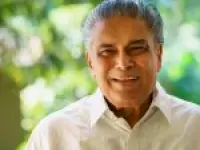
The concept of PDA was introduced by Yadav in June 2023 as a counter to the BJP-led NDA.
Samajwadi Party (SP) chief Akhilesh Yadav asserts that a significant coalition of backward communities, Dalits, and minorities in Uttar Pradesh will rally behind the PDA — Picchde, Dalits, and Alpsankhyak — in the forthcoming Lok Sabha elections. This, he claims, will disrupt the traditional equations and strategies of the ruling BJP.
On X, the former UP chief minister revealed the results of a survey conducted among PDA supporters, indicating strong backing from various demographics. Approximately 90% of respondents, including 49% from backward communities, 16% Dalits, 21% minorities (including Muslims, Sikhs, Buddhists, Christians, Jains, tribals, and others), and 4% upper-caste backward individuals, express confidence in the PDA.
The BJP”s conventional strategies have faltered in the face of the PDA”s momentum, Yadav said. He rallies his supporters with the slogan, “Li hai PDA ne angdai, Bhajpa ki shamat aayi” (PDA has set off, the end of BJP has come).
The concept of PDA was introduced by Yadav in June 2023 as a counter to the BJP-led NDA, with the promise that “PDA hi NDA ko harayega” (It will be the PDA that defeats the BJP-led NDA). While the SP”s core vote bank traditionally comprised Yadavs and Muslims, recent electoral setbacks have prompted Yadav to broaden the party”s appeal to include Dalits, OBCs other than Yadavs, and minorities other than Muslims.
Yadav’s PDA strategy aims to create a rainbow coalition of communities, offering a broader platform for the SP”s outreach efforts. With a section of Dalits disenchanted with the BSP”s leadership, the SP sees an opportunity to engage them by championing the causes of social justice and equitable development.
In addition to reaching out to Dalits, the SP targets non-Yadav OBCs, constituting a significant portion of UP”s population, by positioning itself as the party best equipped to address their concerns. Similarly, the party aims to consolidate support among minorities by emphasizing inclusive policies and representation.
The SP chief has also been advocating for a caste census in UP to ensure fair representation and allocation of resources based on demographic realities. By championing the causes of OBCs and Dalits, he seeks to counter the BJP”s alleged attempts to undermine reservation policies and consolidate his party”s support base.
While the SP remains confident in its ability to mobilize Muslim voters, it recognizes the need to expand its appeal beyond traditional support groups to secure victory in UP. The BJP, on the other hand, is banking on its achievements under Prime Minister Narendra Modi”s leadership, the Ram Mandir in Ayodhya, and “fulfilment of various guarantees”.
In the 2019 Lok Sabha elections, the SP had fought in an alliance with the BSP. The BJP bagged 62 seats while the SP and the BSP managed to win only 5 and 10 seats, respectively.













